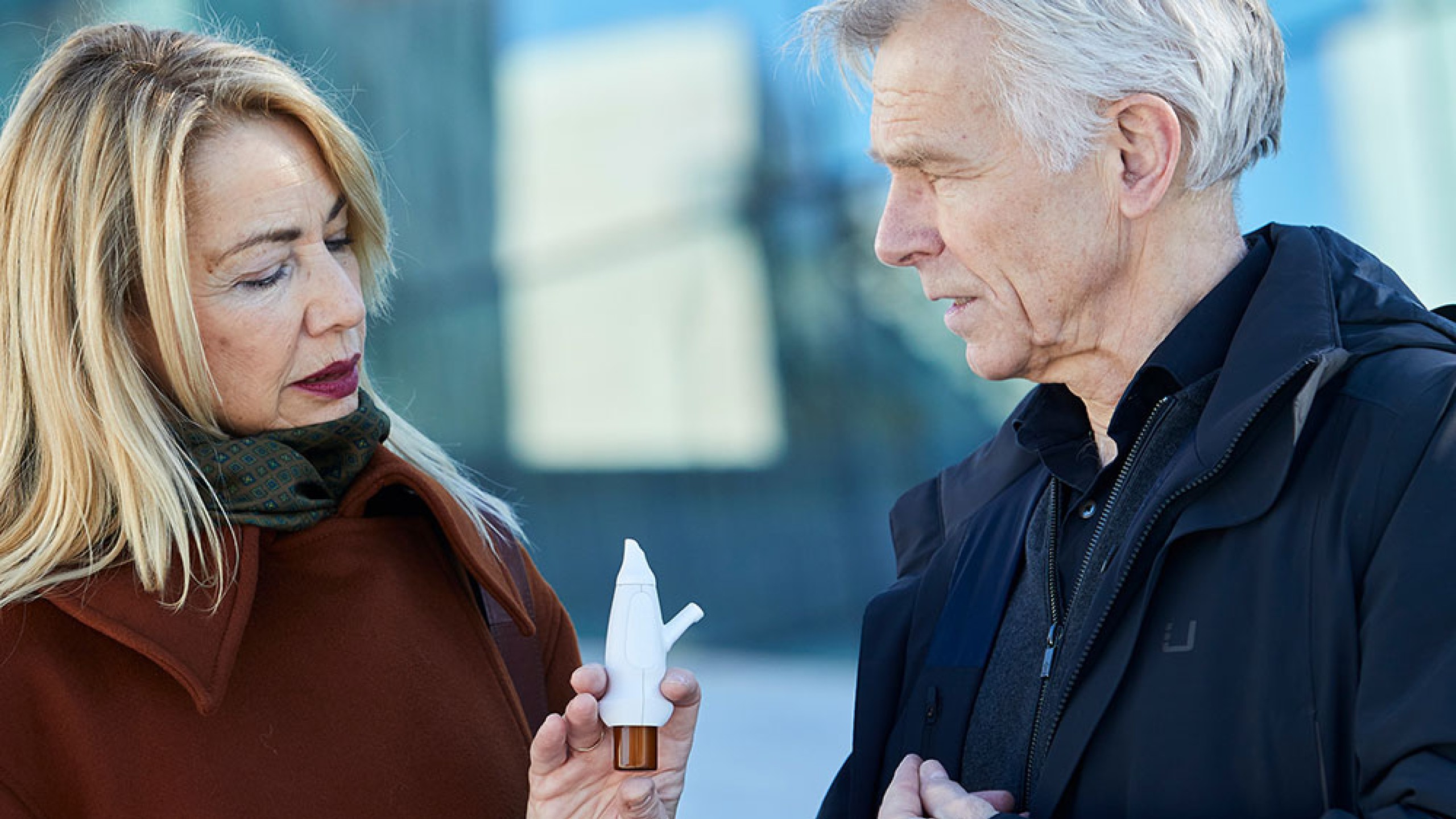Background
Targeted medication injection has been one of the main challenges in the treatment of chronic inflammatory diseases of the nose and sinuses. Traditional spray pumps do not always reach the areas deep in the nose and sinuses. Medicine is often deposited in the wrong areas, swallowed or passed straight through the nasal passages into the lungs, which poses a possible health risk.
While Djupesland worked as an ear, nose and throat specialist at Oslo University Hospital, he became convinced that there had to be a better way to deliver medicine to the nose. He built on clinical experience in the field and inspiration from his PhD in nasal aerodynamics, where he studied the development of the nasal airway in infants and the possible role of nasal obstruction in Sudden Infant Death syndrome.
— As an ENT surgeon, I was frustrated by conventional spray pumps that distribute medication mainly in the front part of the nose, and to a limited extent reach the target areas higher and deeper in the nose, he explains.
This is how the product works
Djupesland began to think about how the medication injection could be improved, which gave him the idea of using the patient's own breath to distribute medicine. He explains that the palate lifts and closes the nose to the back when you exhale against resistance. Djupesland developed an exhalation system (EDS) that utilises this natural mechanism by simultaneously redirecting the exhalation through the nasal passages. The invention comprises a movable mouth-piece and a shaped sealing nose-piece. The air blown into one nostril carries the medication to the target areas deep and high in the nasal passages before the air exits the other nostril. The closed palate seal removes the risk of the medicine going into the lungs. This provides a more accurate and secure distribution.
The nasal pump provides relief for millions of patients with migraines and chronic rhinosinusitis (sinusitis), and can help treat other conditions and a variety of respiratory viruses.
The Optinose system is easy to use. The patient inserts the device's nosepiece into one nostril, takes a deep breath, closes the lips around the mouth-piece and exhales (similar to blowing up a balloon). When the patient presses in on the integrated spray pump, an internal valve opens at the same time as the medication is released. The patient's own exhalation comfortably transports the medicationparticles high and deep to the right places in the nose and sinuses before the air escapes through the other nostril. The pump was specially developed to be patient-friendly, and 98% of respondents in clinical studies have stated that the device is easy to use.
– Good patents are essential to attract investors and to build a business.
Per Gisle Djupesland
Established company
In 2000, Djupesland and his wife Helena helped found Optinose AS to commercialize the invention. She has a law degree and an MBA, and was CEO of Optinose for the first decade. He credits her with providing vital support and advice from the very beginning. Today, Optinose is NASDAQ-listed and employs over 200 people. Since the US represents over 40% of the global pharmaceutical market, Optinose launched a US company in 2010, and they have so far approved and launched two products on the US market, one for acute migraine and one for chronic sinusitis with polyps.
The nasal pump is now also being tested in clinical trials for chronic sinusitis without polyps. The company is investigating whether direct medicationdelivery from the nose to the brain can help people with neurological and psychiatric conditions. Optinose recently announced that they would develop a nasal antiseptic to treat both the symptoms and transmission of COVID-19.
Djupesland is currently Chief Scientific Officer for Optinose and works part-time as an ENT specialist. In this way, he benefits from the combination of research and practical experience that was instrumental in the successful development of the invention.
Rights
Djupesland realized early on that it was very important to submit a patent application. Clinical trials of pharmaceutical products are expensive and take years. The necessary funding for such studies from investors would never have been possible without first submitting good patent applications. Djupesland secured his first European patent in 2004, and since then he has submitted other patent applications for a number of other inventions that strengthen patent protection.
He highlights the early filing of good patent applications as a critical factor in their success. Their business idea is to make good and safe generic medication more effective through his patented delivery system. The nasal pump and the medication are sold together as one pharmaceutical product. They have used a patent office with special expertise to assist in the patenting process.
Won the European Inventor Award in 2021
The European Patent Office (EPO) awarded Per Gisle Djupesland and his invention the European Inventor Award 2021 in the category "industry". This is a prestigious award that he won in competition with a number of prominent inventors. He is the first Norwegian to receive this award.
Per Djupesland explains about how he developed the nasal pump and how it works

Per Gisle Djupesland (right) and Helena Kyttari Djupesland. Per Djupesland explains about how he developed the nasal pump and how it works. [duration 7:00]




